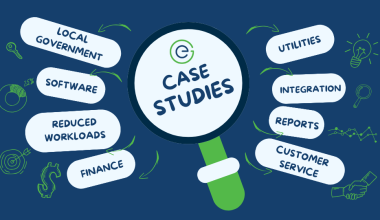Have you ever experienced an Enterprise Resource Planning (ERP) software implementation? Is this your first ERP Software implementation? Are you replacing an old, legacy application software product? Do you have questions about data conversion? If you’ve answered yes to any of these questions, or want to gain some additional insight on data conversion planning, you will want to review these preparation tips and strategies before you embark on your journey.
A new ERP software implementation can be one of the most complex and critical tasks you’ll undertake in your professional career. Some of the challenges you’ll need to overcome include, but are not limited to, learning a new software platform, adapting to existing and new business processes, leading your teams through change, and making decisions about valuable data that should be represented in the new software.
How resource intensive is data conversion? To be blunt, you and your team should expect to spend a large portion of the migration period verifying and validating the data conversion. The most successful implementations involve flexible expectations and the ability to understand that different systems may potentially behave and store data in different ways. These scenarios are usually presented to the customer by the data services team and a business analyst. You will collaborate with the vendor on the best way to handle any roadblocks with the data conversion to produce a desirable outcome.
It is important to understand that preexisting problems in the legacy data will not be corrected with new software, alone. Bad data will likely cause delays in the data conversion timeline and create changes in scope, leading to costly re-work efforts by the vendor and delays in project deliverables.
So, how can you avoid the common pitfall of bad data or “garbage in, garbage out?” Before the data conversion planning begins, speak with your team about data in the current legacy system that is important to them. Ask your team to list these items, and suggest the team prioritize the list from highest to lowest priority items. You may not think of everything in the first meeting, so it’s good to go through the exercise a few times to refine the list. The team should also agree on items that are least important and decide on the data that should not be brought into the new system. Making a decision about what data to exclude from the data conversion is as equally important as considering what to bring forward. Conducting these sessions early on, and often, will build the teams buy-in for the new software and connect them to the project, allowing for a smoother transition overall.

* DILBERT © Scott Adams. Used By permission of ANDREWS MCMEEL SYNDICATION. All rights reserved.
Next, consider cleaning your data ahead of time. When possible, it might be reasonable to consider cleaning or correcting data prior to the final data conversion process. This is a good time to make corrections to data and known issues, as well as closing out or deactivating records, eradicating duplicate data, or identifying data that just doesn’t make sense. Being proactive with your data clean-up efforts will greatly improve the outcome of your data conversion results.
Another strategy to consider is the Minimum Viable Conversion (MVC), or converting only the minimum viable amount of data that is needed to allow the new software to be operational. MVC optimizes data conversion efforts on both the customer and vendor side. This strategy maximizes value by allowing the team to focus on learning the new software, testing business processes and workflow outcomes, and testing system configuration. By taking a selective approach toward data migration, you are likely to solve some of the bad data issues. MVC is a lean and clean approach to data conversion which optimizes the implementation process and provides a critical path to your go-live date.
Another data conversion strategy worth exploring is not converting any data. To find out if this might be an option that you can utilize, find the answers to some of these common questions:
Does the new software have document retention or storage features that can be used as a repository for historical reports and data providing you access to the data? Most legacy products can print reports to searchable PDF or even Excel. These common formats allow end users to easily search and filter information when it’s needed. Identify the most important reports and information that you’ll need access to and speak to your new vendor about the best way to retain the data through the new software product. Document retention features will allow users to create repositories safely and securely for your most valued information.
Is your legacy software going away? If the answer is no, then you already have a repository of data archived and available for you to access historical information. It’s not extraordinary to access the legacy system when historical information needs to be referenced. Many legacy systems and data stay with the customer after separation, making it available.

* DILBERT © Scott Adams. Used By permission of ANDREWS MCMEEL SYNDICATION. All rights reserved.
Remember this: While implementing a new ERP system can be one of the most complex and critical tasks you’ll take on in your professional career, it’s something that can be a positive experience and conquered when approached in the right way. There will be bumps in the road and unexpected challenges to work through in any implementation. Considering some of the above tips and strategies will give your team the best chance at a positive and rewarding journey as you take on your new software implementation.


